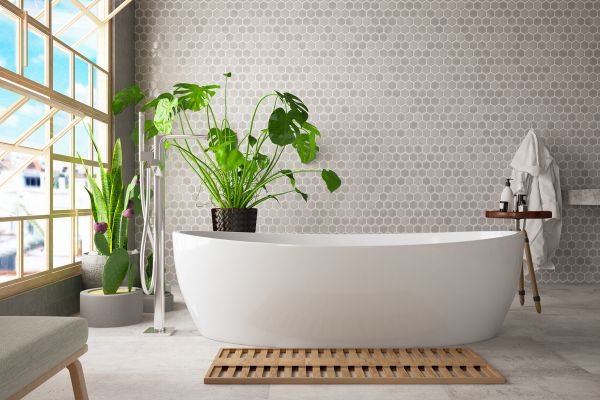In recent years, modular homes have become an increasingly popular choice for homebuyers looking for an affordable and efficient alternative to traditional construction methods. One of the key factors driving this rise in popularity is the cost of modular homes, which, in many cases, offers significant savings compared to conventional homebuilding. But how much does a modular home truly cost? In this article, we’ll explore the different factors that influence the cost of modular homes, provide a breakdown of average prices, and discuss whether modular homes are a good investment for potential homeowners.
What Are Modular Homes?
Before diving into the cost of modular homes, it’s important to first understand what they are. Modular homes are prefabricated structures built in sections or modules at a factory, then transported to the home site for assembly. These homes are constructed to the same building codes and standards as traditional homes, but their off-site construction can lead to faster build times and reduced labor costs.
The primary difference between modular homes and manufactured homes lies in their construction and how they are transported. Manufactured homes are typically built on a steel chassis and are more mobile, while modular homes are permanent structures placed on a foundation. These homes are also often customizable, with many manufacturers offering a wide range of floor plans, styles, and finishes.
Breaking Down the Cost of Modular Homes
The cost of modular homes varies depending on numerous factors, including the size, design, location, and features of the home. On average, the cost of a modular home ranges between $50 and $100 per square foot. However, it’s essential to recognize that this is just the base price. Several additional expenses contribute to the final cost of modular homes, making it important for prospective buyers to consider all the factors that can influence their total investment.
Base Price of a Modular Home
As previously mentioned, the base price of a modular home generally falls between $50 and $100 per square foot. This price is typically for a basic model with standard finishes and minimal customization. However, more elaborate designs, higher-end materials, or custom layouts can push the price up to $150 or more per square foot. Larger homes, with more square footage, tend to cost more as well.
Additional Costs to Consider
While the base price of the modular home is a crucial starting point, there are several other expenses to factor in when calculating the total cost of a modular home. These additional costs can vary significantly depending on the specifics of the project. Let’s explore some of the common expenses that can impact the cost of modular homes:
- Land Costs
The cost of the land where the modular home will be placed is a significant factor in the overall cost. Prices for land can vary dramatically based on location, local real estate market trends, and the size of the property. In some rural areas, land might be relatively inexpensive, while in more urban settings, land can be much more costly. - Foundation Work
Modular homes need a solid foundation to be placed upon. While the home itself is delivered in sections, the foundation must be built on-site before the modules can be assembled. The type of foundation required—whether a crawl space, slab, or full basement—will influence the total cost. A full basement, for instance, can add significantly to the overall price. - Transport and Assembly
Since modular homes are built in a factory and then transported to the site, there are transportation and assembly costs to consider. Shipping the modules can be expensive, especially if the home is being transported a long distance. Once the home arrives at the site, assembly workers must put together the various modules, which also adds to the overall price. - Utilities and Infrastructure
Connecting the modular home to essential utilities like water, electricity, and sewage can add to the cost. If the land is undeveloped or far from existing infrastructure, the cost of hooking up these utilities can become a significant expense. - Permits and Fees
Just like traditional homes, modular homes are subject to local building codes and regulations. Homebuyers will need to pay for necessary permits, inspections, and fees, which can vary by location. These costs should be factored into the total cost of the modular home. - Customization and Upgrades
Modular homes are known for their flexibility and customization options. Buyers can often choose from a variety of floor plans, finishes, and upgrades to personalize their homes. While customization adds to the appeal, it also increases the final price. Features such as energy-efficient appliances, luxury countertops, or upgraded flooring can drive up costs.
Average Total Cost of Modular Homes
Considering all the factors mentioned, the total cost of a modular home can vary widely. On average, you can expect the total cost of a modular home, including land, foundation, and all additional expenses, to range from $100,000 to $250,000. Larger and more luxurious homes can cost upwards of $300,000 or more, while smaller, more basic homes might be available for as little as $50,000.
While modular homes are often less expensive than traditional homes—especially when you factor in the reduced labor costs—buyers should always budget for potential unforeseen expenses. It’s crucial to get an accurate estimate of all the associated costs before making a decision.
Factors Affecting the Cost of Modular Homes
There are several other factors that can influence the cost of modular homes, including:
- Location
The region where you are building your modular home can have a significant impact on cost. Homes built in rural or remote areas may have higher transportation and utility hookup costs, while urban areas may have higher land and permit fees. - Size and Design
The size of the home is a major determinant of cost. Larger homes with more square footage will naturally cost more. Additionally, the complexity of the design—such as multiple stories or custom architectural features—can increase the price. - Builder and Manufacturer
Different builders and manufacturers offer different pricing models. It’s important to research various companies, as costs can vary based on their experience, reputation, and the quality of their work. - Market Conditions
Like all industries, the cost of modular homes can be influenced by the state of the economy, material availability, and labor market conditions. In times of economic growth, the demand for materials may rise, leading to higher prices for both modular homes and traditional homes.
Are Modular Homes Worth the Investment?
The decision to invest in a modular home depends on various personal factors, including budget, lifestyle preferences, and long-term goals. One of the key advantages of modular homes is their affordability compared to traditional site-built homes. For many buyers, the lower initial cost and quicker construction time are attractive benefits.
Moreover, modular homes are often energy-efficient and can be designed to meet modern standards for sustainability. This can lead to long-term savings in utility costs. However, it’s important to remember that the total cost of the modular home includes more than just the initial purchase price, so it’s crucial to plan for all associated expenses.
Conclusion
In summary, the cost of modular homes offers an affordable alternative to traditional home construction, but it’s essential to consider all the factors that contribute to the final price. From land and foundation costs to customization options and permits, buyers should carefully budget for all aspects of the project. By doing so, they can enjoy the benefits of a high-quality, energy-efficient, and cost-effective home.



